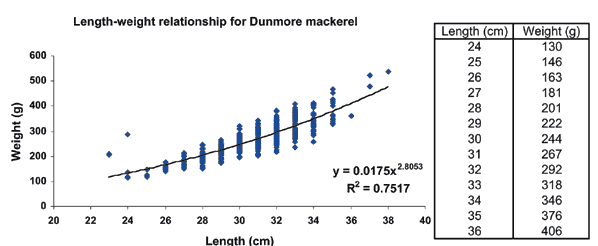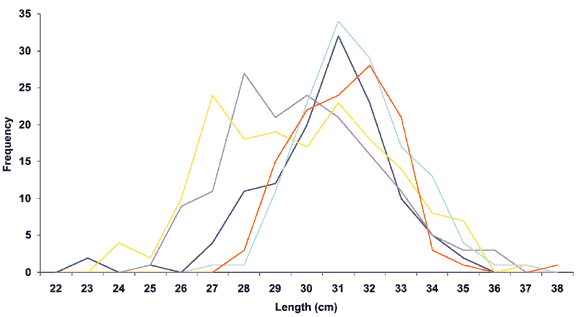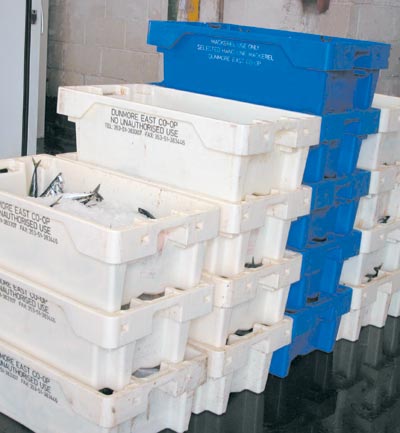| 2004 |

|
YEAR BOOK |
Bord Iascaigh Mhara � The Irish Sea Fisheries Board
|
Hook, line and dinner from Dunmore East!
|

In order to secure their market and to try to raise the price of mackerel landed locally, Dunmore East Fisherman's Co-op decided to investigate the development of a quality scheme for their day boat hand-line caught mackerel, and they approached BIM for assistance with the development of such a scheme.
The first thing to do was to develop the specification for the premium quality fish and, to do this, the quality of the mackerel landed had to be assessed. This process consisted of a number of checks, including temperature on landing, physical appearance and size of mackerel. As the vessels involved are relatively small, it can be difficult for them to ice the fish effectively at sea. To address this, BIM made available to the fishermen a number of insulated ice bins of three sizes, 70, 140 or 310 litres. Obviously the temperature of the fish on landing depended on the time they had spent in ice after being caught, and therefore a sliding scale of acceptable temperature with respect to the time of catching was devised based on best icing practice: e.g. temperatures should not exceed 8�C if the fish were aboard for more than four hours. In terms of appearance, it was determined that the mackerel should have no bruising or crushing, and the gills should be a strong red colour.
In addition, a critical element for the buyer was the fillet yield, and therefore determining the size grade was essential. It would not be feasible to weigh each individual fish, so the length/weight data collected (Figure 1) were used to decide on a number of fish per 5 kg for the premium grade. It was decided that the count per 5 kg should not exceed 24 fish, which would give an average individual weight of 208g and, assuming a yield of 50%, 104g of fillets. As length is more readily determined than weight when at sea, the length-weight relationship (Figure 2) was used to arrive at a minimum length for premium grade mackerel of 28cm. An examination of the size composition of mackerel landed by five boats showed that they would have to grade at sea to land fish of the premium specification.


The fish lovers are appreciating it, as the volumes landed in September 2002 and 2003 were similar, but the value increased by 25%. In addition, the scheme generated on average, an extra order per week.
Contact: Catherine Barrett, BIM, PO Box 12, Crofton Road,
Dun Laoghaire, Co. Dublin;
E-mail: [email protected]